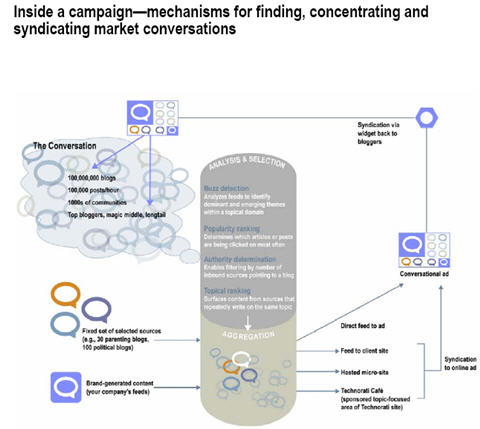Finding conversational marketing's heartbeat

Eight years ago, Chris Locke, Rick Levine, Doc Searls, and David Weinberger presented the The Cluetrain Manifesto, which came up with the phrase that in the Internet age "markets are conversations."
Now Peter Hirshberg, chairman of Technorati, and Steve Hayden, vice-chairman of Ogilvy & Mather Worldwide, along with Doc Searls are extending Cluetrain concepts to the office, with a paper, "The Manifesto on Monday Morning: How to put the wisdom of Cluetrain into action when you get to your office." The paper will be presented at the Conversational Marketing Summit today in San Francisco.
The Cluetrain Manifesto was ahead of its time--before the "Live Web" of blogs, wikis, RSS and the high-velocity, real-time information flow--and business practices are just beginning to catch up. The paper offers guidelines for applying conversational marketing for business and real world examples, and deals with the fundamental concerns marketers have entering the new terrain, e.g., How do brands enter a conversation? How do they syndicate conversations? How do you make advertising include your customer? How do marketers deal with an audience of thousands or millions of Web publishers?
The authors also include a “Conversational Advertising Code of Conduct,” and are solicitating comments in true conversational marketing fashion. Among the "codes" are the four areas where transparency is required: Use of a publisher’s content, the editorial process, attributing advertising and influencing content creators.
"Conversational advertising will fail if it is exploited as a means to cover-up sponsored blogging, pay-per-posting, or any other publishing that is supported and influenced by a brand without being represented as such," the authors wrote regarding a blurring line between advertising and content.
Doc Searls offers his rules of the road for conversational marketing road, such as:
- The purpose of conversation is to create and improve understanding, not for one party to "deliver messages" to the other. That would be rude.
- People in productive conversation don't repeat what they're saying over and over. They learn from each other and move topics forward.
- Conversational marketing is carried out by human beings, writing and speaking in their own voices, for themselves—not just for their employers.
- Conversational marketing’s heartbeat is the human one, not some media schedule. Brands need to work incessantly to be understood within the context of the market conversation and to earn and keep the respect of their conversational partners.
From a monetary standpoint, authenticity and credibility come into play for the most savvy buyers. According to the paper, click-through rates on ads featuring conversations are often much higher than conventional ads.
Hence, conversational marketing will graduate from conceptual framework to a path to profits, and products, brands and services will be better informed via the conversation.
